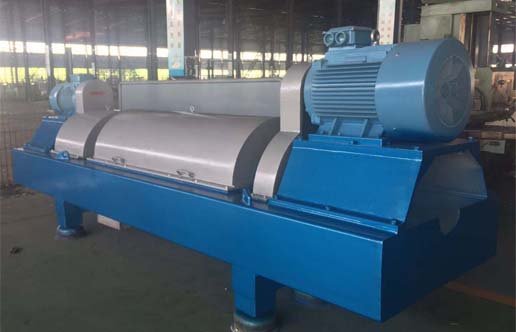Effluent Treatment Plant
Top Leading ETP Plant Manufacturer in India. Trity Enviro Solutions manufactures ace machines...
| Automation Grade | : Semi-Automatic |
| Water Source | : Industrial Effluent |
| Treatment Technology | : Mixed Bed Bio Reactor |
| Application Industry | : All |
| Capacity (KLD/MLD) | : 100 KLD |
Effluent Wastewater Treatment (ETP) Plant Manufacturer
Effluent wastewater treatment is nothing but a process of removal of pollutants and other contaminants from the water that has been used and then discharged from industrial processes, municipal wastewater, and other sources like large residential societies and commercial buildings. The treatment process typically involves a few stages which include physical, chemical, and biological processes, to remove the pollutants and ensure that water is safe to discharge into the environment.
The initial stage of an Effluent treatment plant includes the removal of large particles and debris by involving a screening process. Then, the water is treated with some chemicals in order to remove contaminants like suspended solids, oil, and grease. After this, the water goes through a biological treatment process, where microorganisms are introduced so that it can break down and remove organic matter from the water.
Effluent wastewater treatment is an essential process to ensure that our water resources are protected and conserved for future generations. Proper treatment and discharge of effluent water can help reduce the impact of industrial and municipal activities on the environment and ensure that our water resources are clean and safe for human and aquatic life and that’s why we Trity Environ Solution offer our clients the plant a very cheap rate through effluent treatment plant manufacturers.
Different Stages of its working
The plant uses several stages of treatment to remove pollutants and other contaminants from wastewater before it is discharged into the environment or reused. The steps can vary depending on the type and quantity of pollutants in the water. Here are the common steps of treatment in an effluent water treatment plant:
Preliminary Treatment: This is the first stage that involves the removal of large debris, such as rocks, sticks, and rags, through a screening process along with grit removal, may also be to remove heavy materials such as sand and gravel, and all this can be achieved by installing an effluent treatment plant through effluent treatment plant suppliers.
Primary Treatment: In the second stage, the wastewater flows into a sedimentation tank where the heavier solids settle to the bottom as sludge, and the lighter materials float to the surface. The settled sludge is then removed, and the remaining wastewater is sent to the next stage of treatment.
Secondary Treatment: Therefore the third stage, involves the biological treatment of wastewater using microorganisms. The microorganisms are introduced to break down the organic matter and nutrients present in the wastewater, converting them into carbon dioxide, and water. This stage typically involves an activated sludge process or a trickling filter process.
Tertiary Treatment: This is the second last stage where the advanced treatment processes are used to further remove impurities from the wastewater. This may include processes such as filtration, disinfection, and chemical precipitation. Advanced treatment processes generally remove specific pollutants, such as nitrogen and phosphorus.
Disinfection: The final stage of effluent water treatment involves disinfection to kill any remaining bacteria and viruses in the wastewater. This is typically achieved using chlorine, ultraviolet light, or ozone, and overall treatment can be done with the help of this plant which can be easily purchased through ETP manufacturers and suppliers.
Related Products


STP and ETP Plant Manufacturer in Dehradun
Trity Environ Solutions manufacturers and suppliers of STP and ETP Plants in Dehradun. Sewage Treatment...


STP and ETP Plant Manufacturer in Udaipur
Trity Environ Solutions manufacturers and suppliers of STP and ETP Plants in Udaipur. Sewage Treatme...


STP and ETP Plant Manufacturer in Noida
Trity Environ Solutions manufacturers and suppliers of STP and ETP Plant in Noida. Sewage Treatment...


Supplier of Premium Quality of Decanter Centrifuge
Trity Enviro Solutions is a Supplier of Premium Quality Decanter Centrifuges. Decanter Centrifuges m...


Grey Water Treatment Plant
Are you looking for a greywater treatment plant manufacturer in India? Trity Enviro offers top quali...


STP and ETP Plant Manufacturer in Champawat
STP and ETP Plant Manufacturer in Champawat


Sequencing Batch Reactor
Sequential Batch Reactors or Sequencing batch reactors (SBR) are industrial processing tanks for the...


STP and ETP Plant Manufacturer in Bhiwadi
Trity Environ Solutions manufacturers and suppliers of STP and ETP Plants in Bhiwadi. Sewage Treatment...


STP and ETP Plant Manufacturer in Sikkim
Trity Environ Solutions manufacturers and suppliers of STP and ETP Plant in Sikkim. Sewage Treatment...


Zero Liquid Discharge
Trity Enviro offers Zero Liquid Discharge Plant Systems in India, Zero Liquid Discharge Plant...


